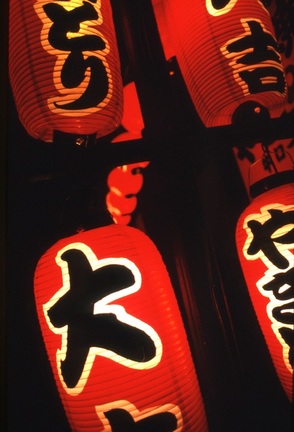 Last week’s YUKATA FESTIVAL put colour back on the streets of HIMEJI, money in the pockets of the mob and a haze of yakitori smoke on the skyline (or was that from the steel mills further west?). Whatever. Praise to the Shinto gods for keeping the rainy season taps turned off while festivities lasted. The Yukata Festival is one of my faves. But as fun as it is to lose yourself in the colourful throngs with a cold beer and a squid-on-a-stick, it’s a relief to return to the tranquility of the Good Hood, my home-away-from-Australia for the past 14 years. This is a place so peaceful you can hear a chopstick hit a kitchen floor two doors down. It is also a microcosm of greater Japan; what happens here, happens in every town and city up and down the archipelago. So what makes it special? Familiarity I suppose. You have to live here a while to understand that. When neighbors welcome you back after a hard day’s work, drop by small packages of fruit and vegetables, or ask you to be this year’s jichikai-cho (neighborhood boss, read: money collector), you know you’ve been accepted! This familiarity extends to dining out. Take Ryosuke’s yakitori joint around the corner, for instance. This wood and tin shack with its bobbing red lanterns and low beams made from old telegraph poles is an extension of my dining room. It boasts Himeji’s hardest-working charcoal grill and there are nights, usually Fridays, when the holding pattern for chicken wing orders is longer than air traffic control’s at Kansai International Airport. While Friday nights at Ryosuke’s might feel like a mountain hut crammed full of starving villagers, they ARE friendly villagers! 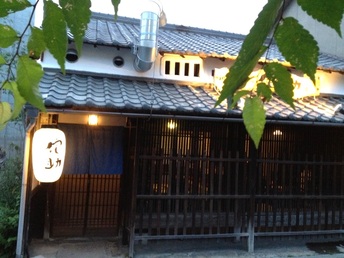 A machiya-turned-restaurant. A machiya-turned-restaurant. The ongoing theme of this blog is about change in a traditional Japanese neighborhood. As mentioned in earlier posts, the elderly continue to pass on and let their empty houses return to the earth. That is, unless the hydraulic excavators get there first; in which case new houses rise and car parks spread like a black plague. But wait! A new philosophy of urban renewal may be stemming that tide. Behind it are people with big ideas and bigger dreams, people who are turning vacant plots and old townhouses, or machiya, into restaurants and shops in much the same way Kyoto and other cities with traditional precincts have done with their old residences, transforming them into cool, funky spaces. Through slatted wooden facades, low lamps illuminate the tatami rooms of several refurbished machiya in my neighborhood. You might even glimpse a waitress (a moonlighting housewife) in kimono as she moves quietly between low tables with trays of tasties for the patrons. And what about an after-dinner tipple? Well there’s this place around the corner also modelled in traditional Japanese style. It has tatami flooring and a sunken bar on which huge earthen kegs of liquor sit and one earthen cup of that stuff (shochuu) will temporarily separate your head from your body. It’s called Nanseki, or Southern Rock. Which is how your head will feel the next day. It’s a ‘watering hole’ but not in the American or Australian sense of the word. No rock and roll, no pick-ups, utes or greasy bikers’ hogs parked outside. Instead there are bicycles; normal bicycles? no, these iron stallions belong to the neighborhood Mothers’ Committee, heavy-duty carrying machines with grocery baskets for bull bars and rear seats for small troops. It’s Friday night. Chicken wings flutter in my stomach. I hesitate at the threshold of Nanseki. I hear the Mothers’ Committee inside calling for more drinks “And make it snappy willya!” I dither before removing my shoes and sliding back the door. Because I know I’m about to enter a boozy Hell filled with hot-cheeked women and precious few angels. Next week: Smells like neighborhood spirit--aromas of the Good Hood.
1 Comment
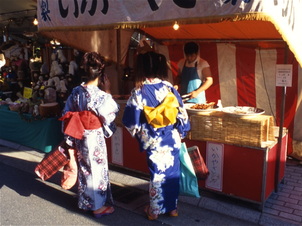 Last week I told YOU about people who wander around at night in their pyjamas chasing small glowing bugs (ほたる, fireflies). Keeping with the nightwear theme is this week’s topic: the HIMEJI YUKATA MATSURI. A long time ago (250 years thereabouts), a powerful dude named Sakakibara Masamune decreed that the people of his castle town slip into something more comfortable and shimmy downtown for a good time. “Do what?” his attendants asked. “Throw a party, you monkeys! I’m outta here!” Indeed he was, off to rule another fiefdom, but not before starting a tradition that would fill the fine streets of Himeji with colourful summer kimono (ゆかた, yukata), octopus dumplings and (a little later) skyrockets and riot police for three days a year, every year thereafter. More than just a celebration of the highly functional yukata, it’s a fashion show! Women’s yukata colours are brighter, patterns livelier, and shock! horror! their hems are rising. The elderly women of the Good Hood shake their heads and click their tongues at these parading young things in short yukata; the young fellas nod their heads and knock themselves out with their tongues. The Yukata Festival, held June 22-24 every year, also celebrates the rainy season. That’s right, it is the WETTEST time of the year (and news just in: rain is forecast for Saturday June 22nd) which doesn’t stop several hundred thousand people from choking the streets and alleys south of Himeji castle with coin to spend on cold beer, toys and tasty treats. Catering to the masses are more than 800 stalls, erected and manned by a small army of itinerant carnivaleers called tekiya. Word on the street is that tekiya are in cohorts with the local yakuza; others say that’s an unfair image and that the stall holders are just abiding by a ‘system’ which takes a nice slice of their earnings and hands it to the mob. Let’s call it a ‘licensing fee’. The City seems OK with this as it ‘stimulates’ the local economy and frees up their rubber stamps for more pressing matters. Times have changed since I tagged along with some English teachers to my first Yukata Festival 15 years ago. Then, youth gangs flocked from all over the province to wage theatrical (and sometimes violent) running pitched battles with their rivals on the city streets. Hard to believe in peace-loving Japan? Well listen to this: watching riot police get pelted with skyrockets, drag troublemakers off to paddy wagons by their orange hair, and see the odd motor scooter get barbecued, reminded me of the Costa Rican fruit vendor riots of ‘91 (Yes, I was in Costa Rica in 1991). Cheap entertainment for the masses, poor public relations for the police, not exactly a festive family affair.  That’s all gone. The police have changed their tune. They now use subterfuge and infiltration tactics, clever stuff like putting dozens of plain clothes officers into the crowds to catch troublemakers on digital camera or video. Maybe this has worked, or maybe the young punks have just gotten older, gotten married and gotten a job, because the Yukata Matsuri IS now a family affair. ‘Smokin Joe’ Matsumoto, the old kitchen gardener who lives on my street in the Good Hood, will be taking his grandchildren again this year. Those long sleeves of his faded yukata will be sure to hold a pack of cigarettes, a lighter and some coins for cotton candy. My old friend Ono-san won’t be going; she thinks it’s too crowded, too noisy, the food tasteless and too expensive. “I’m saving my yukata for the fireworks festivals,” she says. If YOU go, be sure to drop by the Ghost House at the edge of Otemae park; it has been a going concern for years, adept at taking your money and scaring the beejeezuss out of you with the screams of other teenage patrons. They say a good ghosting chills you out during a long, hot Japanese summer. Personally I’d prefer a cold beer. But that’s the subject of next week’s blog: eating out in the Good Hood. Whenever boredom threatens, something in the Good Hood brings back the verve. Tonight it’s fireflies! June is firefly season in Japan and in my neighborhood, hidden away in the backstreets of Himeji city in western Honshu, word spreads fast: riverside is the place to be.
On the old bridge at the end of my street, where the Semba River cuts a swathe through the Good Hood, kids leap and squeal at tiny specks of golden light floating on the night air. ‘Smokin Joe’ Matsumoto, the old kitchen gardener who lives up the street, keeps his hair on. He stands on the bridge watching this aerial courtship with the air of a man who’s seen it all before. And to the light show he adds the glowing tip of his cigarette. Healthy rivers attract fireflies. It’s a barometer of clean water says my old friend, Ono-san, who bundles me and her three elderly best friends into her Toyota minicar and carries us upcountry one night. For an hour she hugs the bends and straights of Hyogo prefecture’s Ichikawa River, until the paddylands turn to valleylands and farm hamlets disappear behind forest. We arrive at a tributary called the Okabe River and search its banks. Search for quite some time. “Watch out for snakes,” says Ono-san. “What about fireflies?” I ask. “Still too light,” she replies. “But I can hardly see you, ouch!” The three ladies giggle like schoolgirls. So we stop and wait. We wait some more and they giggle some more. Then from out of the forest and across the water sweeps a cloud of blue and yellow sparks. Something mystical, otherworldly, thousands of tiny pulsing lights dipping and diving, floating and wheeling on the cool night air. The women squeal; the entire Okabe is quickly festooned in fairy lights. But just as quickly as it begins, the show ends. A cloudburst sends down raindrops that’d fill a shot glass, splattering our backs and smacking the river’s surface. Dragon’s teeth mountains loom overhead, sheeted with rain. The fireflies retreat into the forest, the ladies retreat to the minicar. The smell of the land rises, damp and vegetative. The Honshu hinterland offers spectacular firefly viewing in June. If you’re out and about, look for hand-painted signs with the hiragana characters ほたる, or “Hotaru.” Also keep an eye out for large groups of people in pyjamas pacing the watercourses and creeks. These are locals, people who know best (but not better than to walk around at night in their pyjamas). Back in the Good Hood, it’s time for nostalgia. Ikeda-san, my 80-something-year-old neighbor, recalls the hot June nights of his childhood when he’d sleep outside with a mosquito net slung across him. He’d catch a jar full of fireflies, set them free inside and fall asleep to their pulsing glow. Night-time colour is something we get a lot of in Himeji; the Yukata Festival comes to town this month! But let me tell you about that next week... 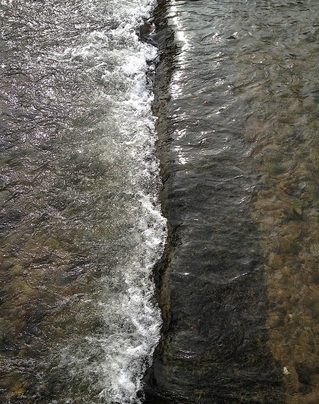 Venice of the East it isn’t, but there’s no shortage of water running through the Good Hood at this time of year. The wet season waits in the wings. From late May to late June rain falls in grey sheets, so monotonous it grates. Gimme lightning! gimme thunder! a violent downpour with a rainbow even! But not the droll drum of grey drizzle on my roof tiles. Buson, the haiku poet, put a positive spin on the rainy season over 200 years ago: A flash of lightning! The sound of drops Falling among the bamboos Between deluges the elderly folk charge into their vegetable patches and flower gardens to beat back the rampaging weeds and rescue their strawberries and tomatoes; they pitch uri melons straighter than rookies on the Himeji Kogyo Highschool baseball team. But this isn’t about flying fruit, it’s about the Semba River, the one constant cooling element of the Good Hood. While our elderly residents depart steadily for loftier realms, the river never gives up the ghost. Its ebb and flow reflects the seasons: shallow and frigid in winter, lively and sparkling in spring, tea-green and lazy in summer, muddy and swollen after the typhoons of autumn. Says my neighbour Fujimori-san: “We used to swim in the Semba after school.” But that was 60 years ago and back then the surrounding land, she says, was a patchwork of rice and vegetable fields and the water ran swift and full with medaka (Japanese killifish), unobstructed by urban planners. Some people use it as a dump these days, people who think the current will carry off their shit for good. Interesting shit, mind you: porno comics, adult dvds, umbrellas, PlayStation1s, jogging shoes (never a pair), empty sake cartons and the occasional bicycle. At its lower reaches, where the river feeds the moats of Himeji castle, there’s an almost decorative effect in the way the snagged fishing lures dangle from the trees overhanging the water. A walking path follows the Semba River from the Good Hood, all the way into downtown Himeji city. Familiar faces line this route; there’s the laughing grandmother who lives across from the bakery and feeds sardines to the grey heron with arthritis. And Smokin Joe, the old kitchen gardener who watches the river and puffs thoughtfully, growling his “ohayo” or a “konnichiwa” depending on the time of day. And many more characters, too, which this post doesn’t have time for. You’d be surprised how much wildlife inhabits a small Japanese neighborhood river. In the Semba live turtles, carp, frogs, snakes, ducks, grey and white herons, and bats which gorge on insects by twilight. Several weeks ago my jichi-kai, the neighborhood association, demanded all able hands on deck to clean up the river. Thanks to their dejunking efforts, cleaner waters are bringing back the fireflies. Says my old friend Ono-san, “fireflies determine a river’s clarity—the more the better!” Yep, the firefly viewing season is here. But more on that next week. |
This Blog:What is the essence of a traditional Japanese neighbourhood? Writing from my home in Himeji, a castle town in western Honshu, Seaweed Salad Days distills, ferments, presents! Archives
March 2024
Categories
All
|
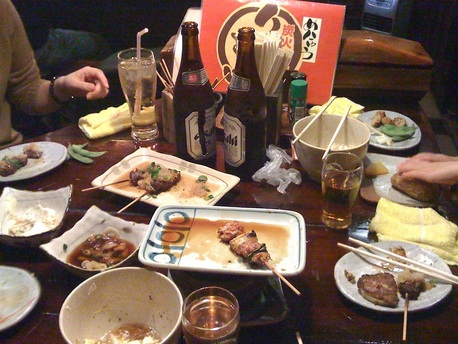
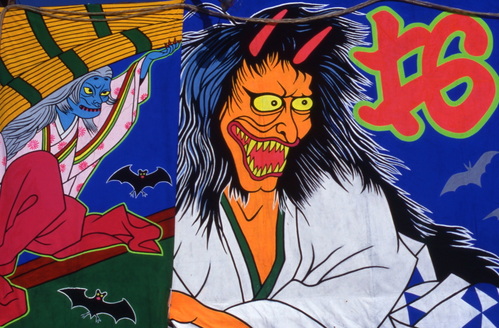
 RSS Feed
RSS Feed
